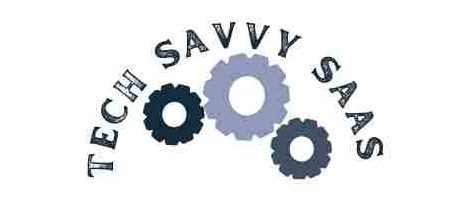Imagine a bustling tech startup brimming with potential yet bogged down by the limitations of traditional software solutions. Their development team, skilled and enthusiastic, finds themselves mired in the complexities of maintaining on-premises infrastructure, battling constant software updates, and grappling with scalability issues. It’s a familiar tale in today’s fast-paced digital landscape, where innovation waits for no one and time is of the essence.
Enter Software as a Service (SaaS), the game-changer that promises to revolutionize how businesses approach software development. SaaS solutions represent a paradigm shift, offering developers a lifeline amidst the chaos of traditional software deployment. By outsourcing infrastructure management to third-party providers, SaaS liberates developers from the shackles of server maintenance and software updates, allowing them to focus their energies on what truly matters: coding and innovation.
But what exactly are SaaS solutions? At their core, they are cloud-based software applications hosted and managed by third-party providers. This means that instead of purchasing and installing software on individual computers, businesses can access applications via the internet, paying only for what they use on a subscription basis. The benefits are manifold: scalability ensures that applications can grow with the business without the need for costly upgrades; cost-effectiveness eliminates upfront hardware and software expenses; and accessibility enables users to work from anywhere with an internet connection.

What is the essence of SaaS solutions, and how are they transforming the software development landscape?
- What is the essence of SaaS solutions, and how are they transforming the software development landscape?
- How has the landscape of SaaS evolved over time, and what factors have contributed to its widespread adoption?
- Can you provide real-life examples of successful SaaS implementations and their impact on developers' productivity and efficiency?
- How can developers ensure they select the right SaaS solutions for their projects?
- In conclusion,
In essence, Software as a Service (SaaS) solutions represent a seismic shift in how developers conceive, build, and deploy software. Gone are the days of cumbersome on-premises installations and perpetual licensing agreements. Instead, SaaS solutions offer a streamlined, subscription-based model that empowers businesses to access and utilize software applications via the internet. This shift not only simplifies software deployment but also democratizes access, enabling businesses of all sizes to leverage cutting-edge technology without the hefty upfront costs.
How has the landscape of SaaS evolved over time, and what factors have contributed to its widespread adoption?
The evolution of SaaS can be traced back to the early 2000s, when pioneering companies like Salesforce introduced the concept of cloud-based software delivery. Since then, SaaS has experienced exponential growth, fueled by advancements in cloud computing, ubiquitous internet connectivity, and a shifting paradigm towards agile development practices. Today, SaaS is not just a buzzword but a cornerstone of modern business operations, with an estimated $116 billion in global market revenue in 2021 alone.
What are the key features that distinguish SaaS solutions from traditional software applications, and how do they benefit developers?
At the heart of SaaS solutions lie three key features: accessibility, automatic updates, and subscription-based pricing. Accessibility ensures that applications are accessible anytime, anywhere, from any device with an internet connection, empowering developers to work remotely and collaborate seamlessly. Automatic updates eliminate the need for manual software maintenance, ensuring that applications are always up-to-date with the latest features and security patches. Subscription-based pricing offers developers the flexibility to scale their usage according to project requirements, minimizing upfront costs and maximizing ROI.
Can you provide real-life examples of successful SaaS implementations and their impact on developers’ productivity and efficiency?
Certainly! Take, for instance, Slack, the popular team collaboration platform. By providing a centralized hub for communication and project management, Slack has revolutionized how development teams collaborate, reducing email clutter and streamlining workflows. Another example is GitHub, the world’s largest repository of open-source code. By offering a platform for code hosting, version control, and collaboration, GitHub has empowered developers to share knowledge, contribute to projects, and accelerate innovation at scale. These real-life examples underscore the transformative impact of SaaS solutions on developers’ productivity and efficiency, enabling them to deliver high-quality code at scale, on time, and within budget.
How can developers ensure they select the right SaaS solutions for their projects?
Understanding your business needs is paramount to selecting the right SaaS solutions. Developers must embark on a comprehensive assessment of their organization’s pain points, goals, and strategic objectives. By pinpointing areas of inefficiency or opportunity, developers can tailor their technology choices to address specific business needs. For example, a company experiencing rapid growth may prioritize scalability and flexibility in their SaaS solutions, while a company focused on cost savings may prioritize efficiency and cost-effectiveness.
What steps should developers take when researching SaaS providers?
When researching SaaS providers, developers should conduct a thorough evaluation of available options, considering factors such as features, pricing, and customer reviews. This entails analyzing the functionality of each solution to ensure it aligns with project requirements and budget constraints. For instance, developers may compare the feature sets of different project management tools to identify the one that offers the most robust suite of capabilities at the best value. Additionally, reading customer reviews and testimonials can provide valuable insights into the real-world performance and reliability of each provider.
What considerations should developers keep in mind when integrating SaaS solutions with existing systems?
Considerations for integration are critical to the successful implementation of SaaS solutions. Developers must assess the compatibility of each solution with existing systems and workflows to ensure seamless integration. This may involve evaluating factors such as data migration capabilities, API support, and customization options. For example, a company using Salesforce as its customer relationship management (CRM) platform may seek a SaaS solution that integrates seamlessly with Salesforce, allowing for the exchange of data and streamlined workflows between systems.
Why is it important for developers to choose reliable SaaS providers with a proven track record?
Emphasizing the importance of choosing reliable SaaS providers cannot be overstated. Developers must prioritize providers with a solid reputation for reliability, security, and customer support. This minimizes the risk of downtime, data breaches, or other disruptions that could impact project timelines and deliverables. For instance, a developer building an e-commerce website may opt for a cloud hosting provider like Amazon Web Services (AWS) or Google Cloud Platform (GCP) due to their reputation for robust infrastructure and responsive customer support. By selecting trusted providers with a proven track record, developers can mitigate risks and ensure the success of their projects.
How can developers effectively implement SaaS solutions within their organizations?
Developing an implementation plan is the first step towards successful SaaS adoption. This involves setting clear objectives, defining project scope, and establishing realistic timelines for implementation. By outlining specific goals and milestones, developers can ensure alignment with business objectives and allocate resources effectively. For example, a development team tasked with migrating to a new project management platform may create an implementation plan that includes phases for data migration, user training, and system testing, with deadlines for each phase to keep the project on track.
What measures should developers take to ensure seamless adoption of SaaS solutions across their organization?
Training and onboarding are crucial aspects of SaaS implementation, as they empower employees with the skills and knowledge needed to leverage new technology effectively. This may involve conducting training sessions, creating user guides, and providing ongoing support to address any questions or concerns. For instance, a company transitioning to a new customer relationship management (CRM) system may offer hands-on training sessions for sales and marketing teams, ensuring they understand how to navigate the new platform and utilize its features to enhance productivity and customer engagement.
How can developers monitor and optimize the performance of SaaS solutions over time?
Monitoring and optimization are ongoing processes that enable developers to evaluate the performance of SaaS solutions and make adjustments as needed. This may involve tracking key performance indicators (KPIs), analyzing usage data, and soliciting feedback from users to identify areas for improvement. For example, a development team may use analytics tools to monitor website traffic and user engagement metrics for a SaaS-based e-commerce platform, allowing them to identify trends and optimize the user experience to drive conversions and revenue.
What are the tangible benefits of proper implementation of SaaS solutions, and how can developers illustrate these benefits to stakeholders?
Illustrating the benefits of proper implementation through case studies and success stories is essential for demonstrating the value of SaaS solutions to stakeholders. By showcasing real-world examples of how SaaS solutions have transformed business operations and driven growth, developers can build confidence and buy-in from decision-makers. For instance, a developer may present a case study highlighting how a SaaS-based project management platform helped a company increase productivity by 30% and reduce project turnaround times by 20%, leading to significant cost savings and improved customer satisfaction. These concrete examples serve as compelling evidence of the transformative power of SaaS solutions and their potential to drive business success.
Why are SaaS solutions essential for driving business success, and how do developers contribute to this transformation?
- SaaS solutions offer businesses scalability, cost-effectiveness, and accessibility, enabling them to adapt to changing market conditions and stay ahead of the competition. For example, a study by Gartner found that businesses using SaaS solutions experienced a 63% reduction in total cost of ownership compared to traditional software solutions.
- Developers play a crucial role in leveraging SaaS to accelerate digital transformation by selecting, implementing, and optimizing SaaS solutions to meet business objectives. According to a survey by Forrester, 84% of developers believe that SaaS solutions are essential for their organization’s digital transformation efforts.
What factors should developers consider when selecting and implementing SaaS solutions?
- Careful consideration and research are essential when selecting and implementing SaaS solutions to ensure alignment with business goals and objectives. Developers should stay informed about industry trends and emerging technologies to make informed decisions. For instance, a survey by IDC found that 68% of IT leaders believe that keeping up with emerging technologies is essential for staying competitive in their industry.
- Developers should also prioritize reliability, security, and customer support when choosing SaaS providers to mitigate risks and ensure project success. According to a study by the Ponemon Institute, the average cost of a data breach is $3.86 million, highlighting the importance of selecting secure and reliable SaaS solutions.
How can developers leverage SaaS solutions to drive innovation and growth in today’s competitive landscape?
- By embracing SaaS as a tool for innovation and growth, developers can build cutting-edge applications that meet the evolving needs of various industries. For example, a study by McKinsey found that companies that fully embrace digital transformation are 26% more profitable than their competitors.
- SaaS solutions enable developers to focus on what they do best: coding and building innovative solutions, rather than infrastructure management. This allows for faster time-to-market and greater agility in responding to customer needs and market changes. For instance, a report by Deloitte found that companies with agile development practices are 2.5 times more likely to be top performers in their industry.
In conclusion,
The transformative power of SaaS solutions for enhancing business operations cannot be overstated. By leveraging SaaS, businesses can drive growth, improve efficiency, and stay competitive in the digital age. For developers, SaaS enables a greater focus on innovation and coding, leading to increased productivity and job satisfaction. By staying agile and competitive in the ever-evolving market, businesses and developers can unlock long-term benefits and achieve sustainable growth and success. It is essential for developers to adopt a strategic approach to technology adoption and implementation to maximize the value of SaaS solutions.
More Post
- How Developers are Driving Innovation with AI, Blockchain, IoT, and Cloud Computing
- How AR, AI, and MR are Transforming Reality: The Quantum Leap in Tech Trends
- Tech Wonderland: A Journey Through Future Possibilities
- Beyond Boundaries: Exploring Emerging Technologies
- How to Secure Your WordPress Website: Cybersecurity Tips






